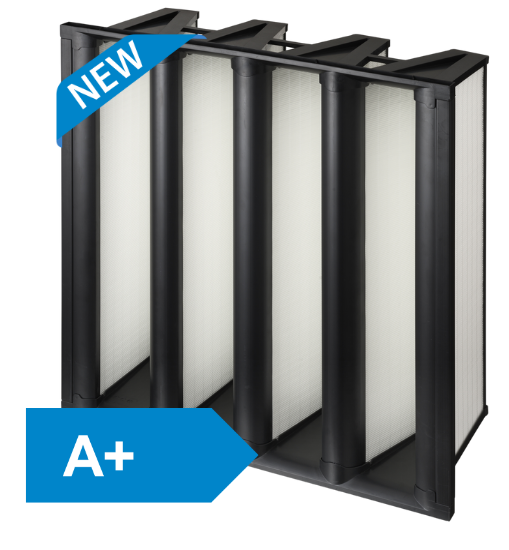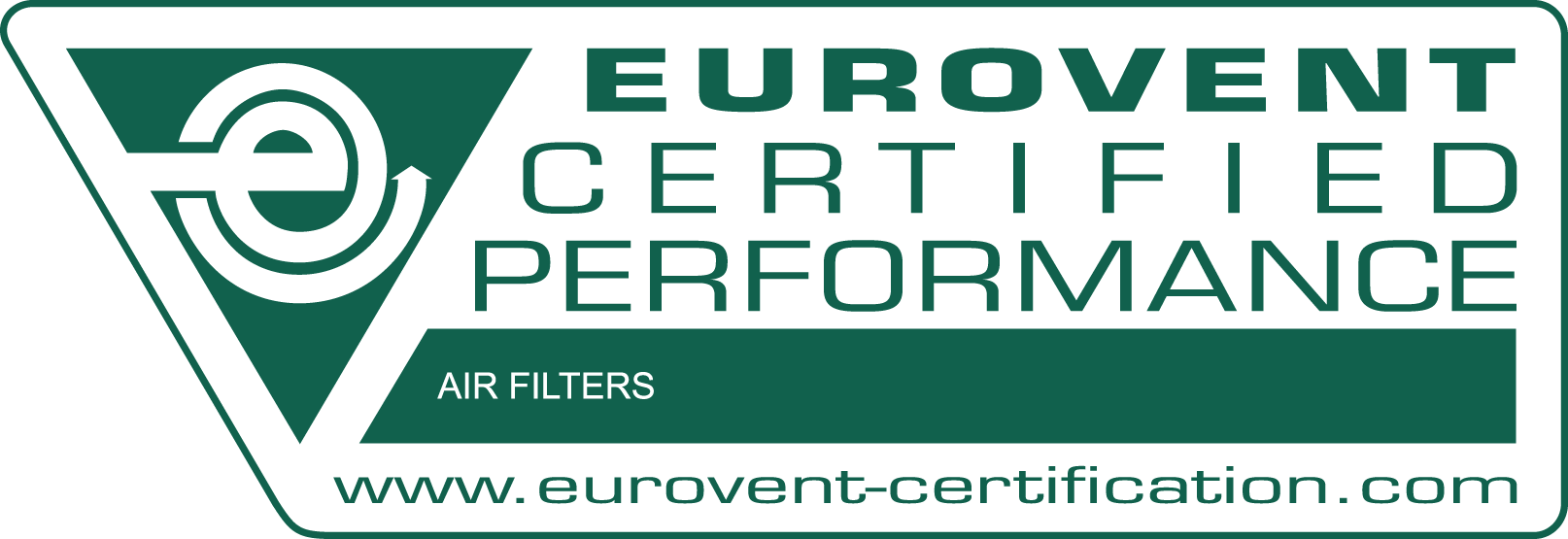
HPQ/ES compact filters are used as fine filters and are designed to equip all types of commercial and industrial HVAC installations in general ventilation air handling units.
The V-bank filters have a unique, patented, streamlined curved frame at the air intake side and are configured with a plurality of filter elements for optimum and efficient airflow performance during operation. The result is an A+ or A label compact filter* that can be configured to achieve lower pressure drop and reduced energy consumption by 30%.
HPQ/ES compact filters improve the indoor air quality by removing the finest particles from the air, thus improving the comfort and the working conditions.

AFPRO Filters BV participates in the ECP certification programme for Air Filters (FIL). Check the ongoing validity of the certificate: WWW.EUROVENT-CERTIFICATION.COM
*The HPQ-85/ES compact filters have an A+ label and the HPQ-98/ES compact filters have an A label.